Wondering how to mix real and fake plants without it looking obvious? You’re not alone—and you’re in the right place. This guide will show you how to blend artificial and live greenery in a way that looks stylish, intentional, and effortlessly cohesive.
Real plants bring a breath of life into any space, but let’s face it—not every home has the perfect conditions or time for a thriving indoor jungle. That’s where faux plants come in: they’re durable, low-maintenance, and more convincing than ever before. When styled right, a mix of real and fake plants can offer the best of both worlds—natural charm and foolproof design.
In this post, we’ll explore expert techniques for styling, product recommendations to get you started, and actionable decor strategies to help your home look professionally styled—without the upkeep. Let’s dive in!

Table of Contents
Why Combine Real and Artificial Plants?
Blending faux greenery with live plants isn’t just a space-saving hack—it’s a design strategy that delivers style and practicality in one. If you’re wondering how to mix real and fake plants without compromising your decor, the secret lies in understanding what each type brings to the table.
Visual Cohesion with Flexibility
Live plants thrive in specific conditions, like filtered light or consistent humidity. But what about that dim hallway or the top of a bookshelf? That’s where faux greenery shines. Mixing real and artificial plants allows you to maintain a cohesive look throughout your space—even in areas where real plants wouldn’t survive.
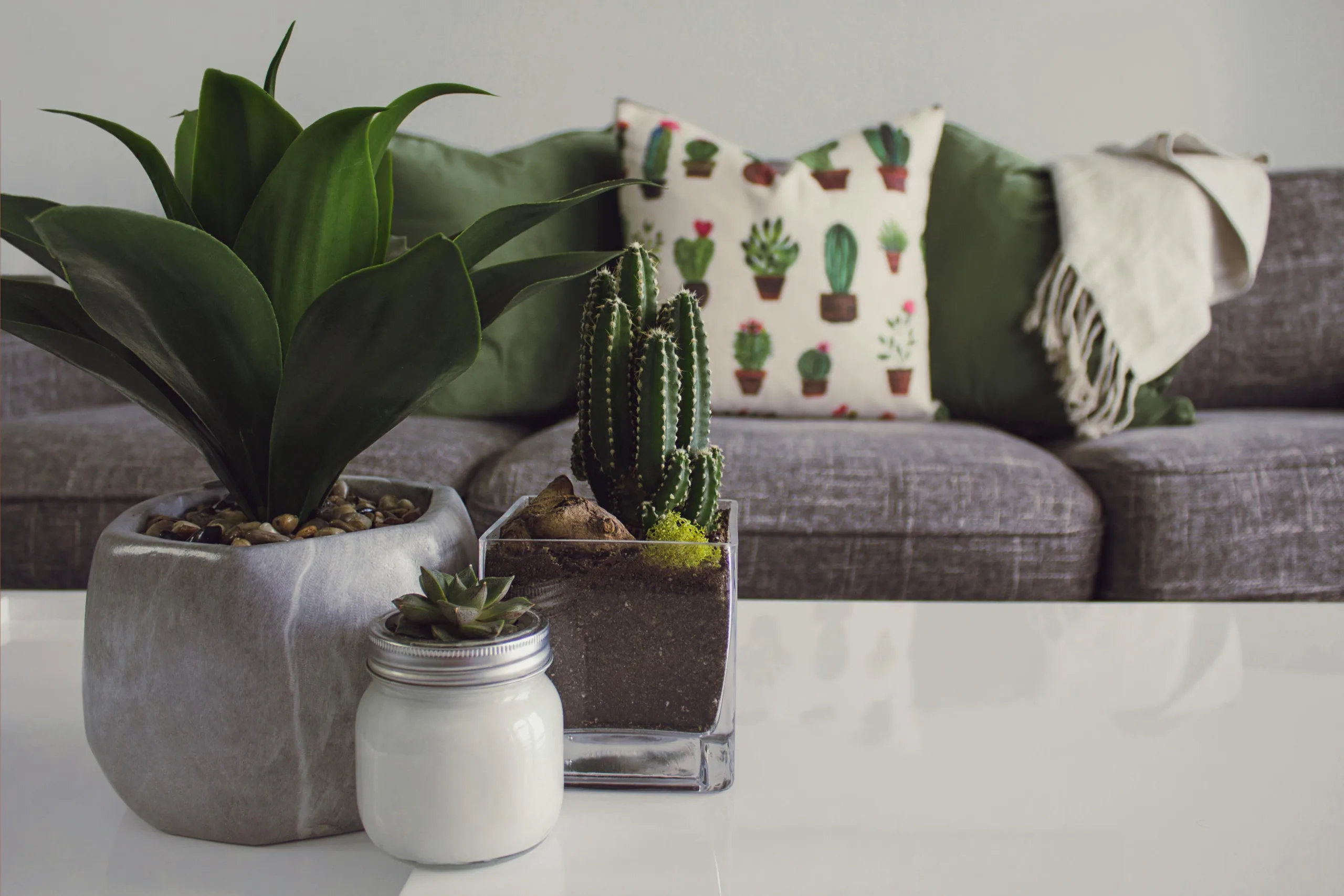
Low Maintenance, High Impact
Let’s be honest—plant care takes time. By integrating faux plants into your decor, you reduce the pressure of maintaining everything. Water the real ones, dust the artificial ones occasionally, and your space stays lush with minimal upkeep.
This combo also ensures your decor doesn’t suffer if a live plant goes dormant or loses leaves. The faux options pick up the slack visually, keeping the room looking full and styled.
Cost-Effective and Long-Lasting
Faux plants are a one-time investment. You don’t have to worry about pests, repotting, or replacements. They stay vibrant all year, helping you stretch your decor budget while achieving the lush aesthetic that only greenery can provide.
For busy professionals, pet owners, or people who travel often, mixing artificial and real plants offers the perfect balance between beauty and function.
Design Principles for Mixing Plants
Knowing how to mix real and fake plants successfully is all about strategy. It’s not just about what you use—it’s how you combine textures, colors, and placement to make the design feel intentional and cohesive.
Match Tones and Textures
Start by observing the visual weight and tone of your real plants. If you have deep green rubber plants or glossy pothos, choose faux greenery that complements those textures. Avoid overly plastic-looking pieces and opt for matte or softly varied finishes for realism. Texture adds depth, and harmony keeps the look grounded.
Balance Heights and Shapes
Just like in nature, variety adds beauty. Use tall, leafy faux trees in corners to draw the eye upward, and balance them with real trailing plants or smaller pots on nearby shelves. Clustering is key—grouping in odd numbers (3 or 5) creates a more natural, effortless feel than perfect symmetry.

Use Consistent Planters
One trick to unify real and faux plants is using similar or matching pots. Whether it’s ceramic, rattan, or minimalist matte black, a cohesive planter style ties everything together. It prevents your eye from spotting the “fake” and helps the entire scene blend smoothly.
Real in Prime Spots, Faux in Gaps
Use your best, healthiest real plants in prime visual spots—like eye-level shelves or tabletop centerpieces. Fill in harder-to-reach or low-light areas with faux plants to extend the greenery without extra care. This technique also helps preserve your real plants by reducing overexposure in poor locations.
Styling Techniques That Work
Once you understand how to mix real and fake plants, it’s time to put it into action. These styling techniques can help you create a lush, seamless display that blurs the line between natural and artificial greenery.
Use Matching or Coordinated Planters
Visual consistency is key. One of the simplest ways to tie together real and faux plants is to house them in similar containers. Use the same material or color palette—like white ceramic or woven baskets—so they look like they belong together, even if one never needs watering.
Layer and Stagger Plant Placement
Think in terms of visual layers. Place taller faux plants behind shorter real ones or use trailing vines to spill over shelves and soften edges. This adds movement and depth, helping to disguise what’s real and what’s faux.
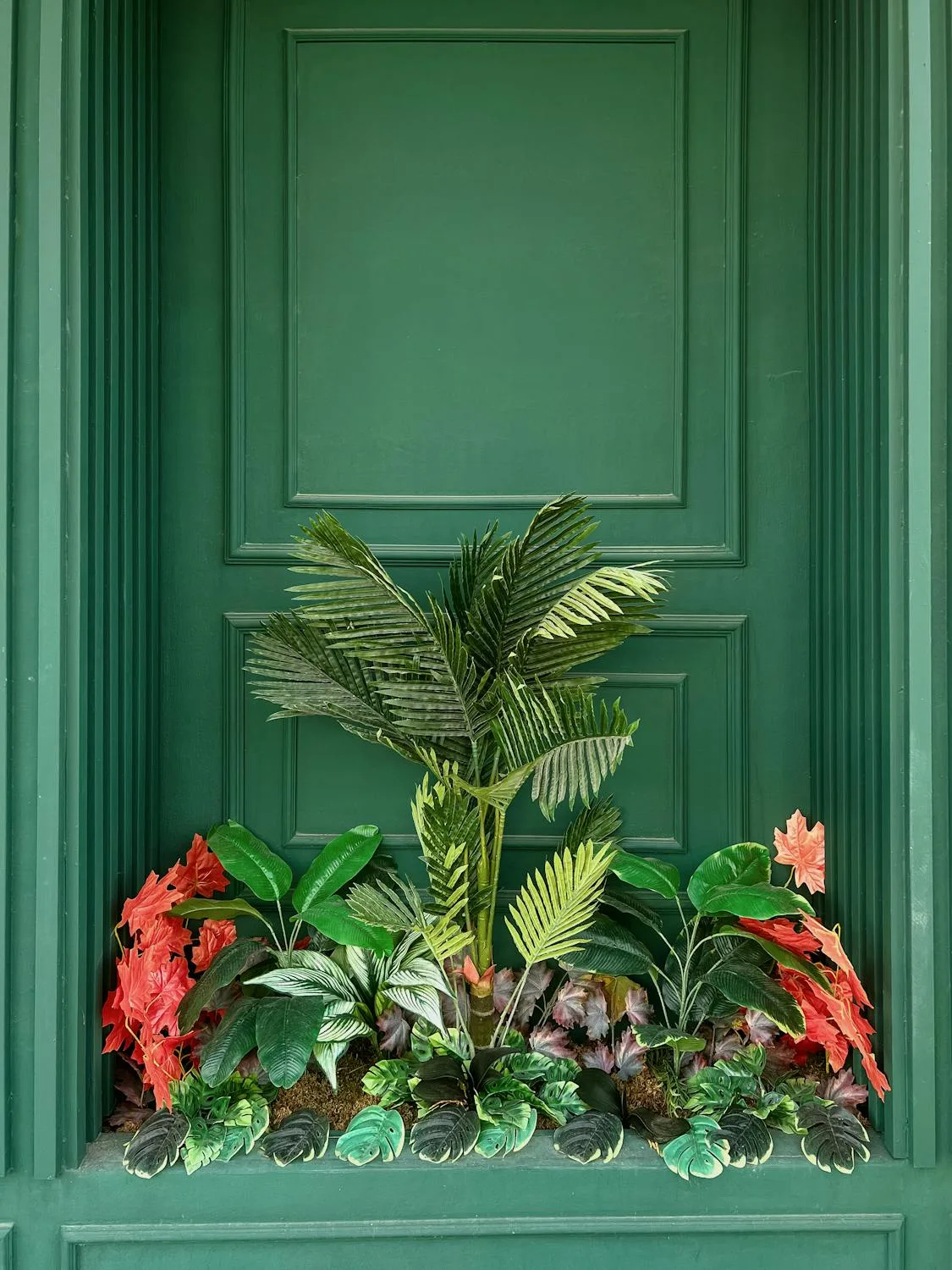
Hide the Bases
One giveaway for faux plants is their base. Disguise plastic pots or visible foam with moss, decorative gravel, or natural pebbles. For larger faux trees, place them in woven baskets and top with a fabric wrap or soil cover for a grounded, natural finish.
Leverage Lighting and Location
Faux plants are ideal for spaces that don’t get enough light. Place them in corners, bathrooms, or bookshelves where a real plant wouldn’t thrive. Reserve your sunniest spots for the real ones and mix them together where the eye naturally travels between them.
And remember—no one will scrutinize your setup if the overall feel is inviting. The magic of how to mix real and fake plants lies in placement and confidence.
Top 8 Artificial Plants to Pair with Real Ones
Mastering how to mix real and fake plants isn’t just about placement—it’s also about picking the right faux companions. These artificial plants not only look realistic but blend beautifully with live greenery for a natural, lush effect.
1. Mini Eucalyptus & Rosemary Trio in Wood Box
This charming set of three faux plants adds a cozy, rustic vibe to desks, wedding decor, or small spaces. The wooden box creates a grounded, natural aesthetic that complements real herbs or succulents.
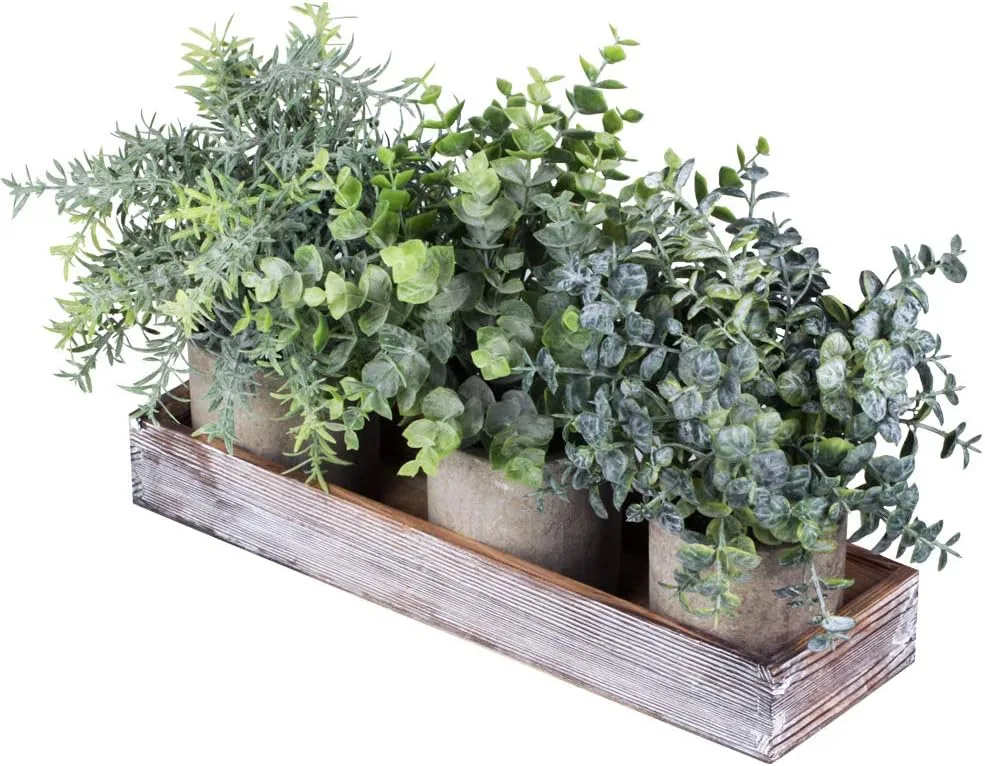
2. Compact Faux Succulents – Set of 2
These two mini succulent plants offer a realistic look and low profile, perfect for layering into a shelf display or desktop garden with real succulents or cacti.

3. Lavender Mini Potted Plant Set
This pair of faux lavender plants adds a soft pop of purple to your decor. Ideal for mixing with real greenery for color contrast in entryways or kitchen windows.
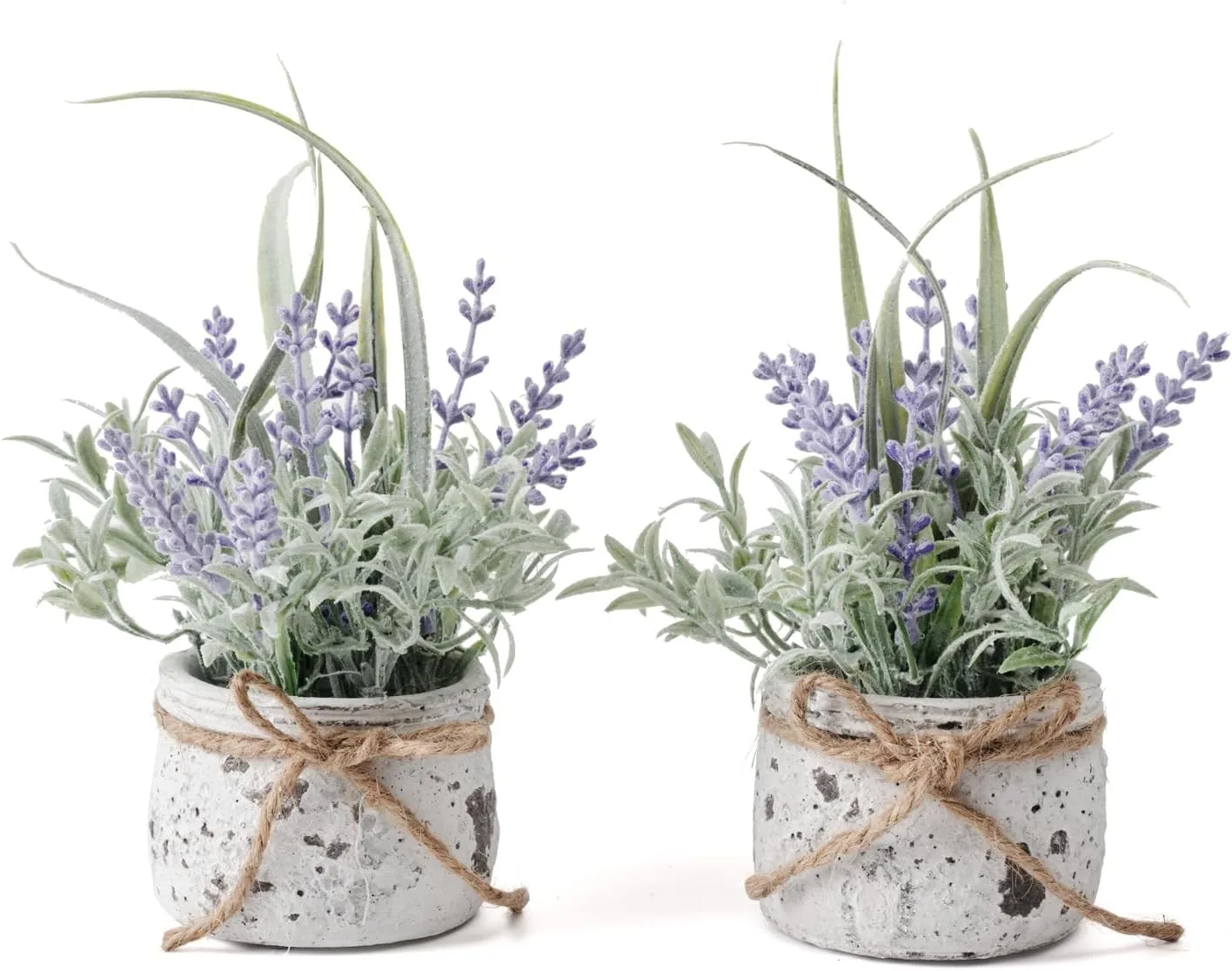
4. Rustic Galvanized Pot Duo
This farmhouse-style set includes two faux eucalyptus plants in galvanized pots—perfect for shelves, bathroom counters, or coffee tables alongside real ferns or spider plants.
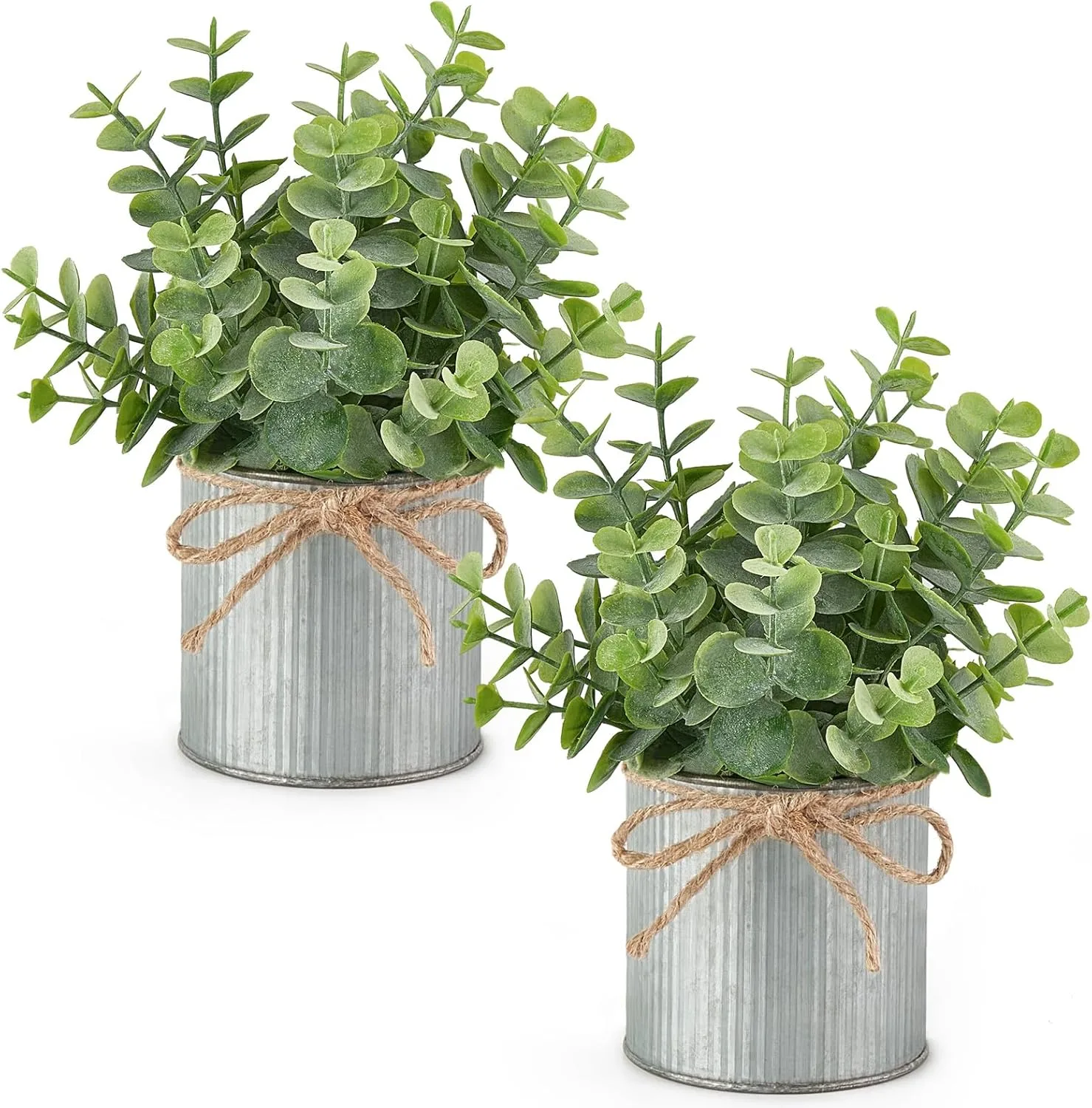
5. Succulent Trio in Wooden Pots
This stylish assortment of small faux succulents in wood pots blends texture and warmth, making them perfect to intermix with live cacti or aloe vera on sunny ledges.
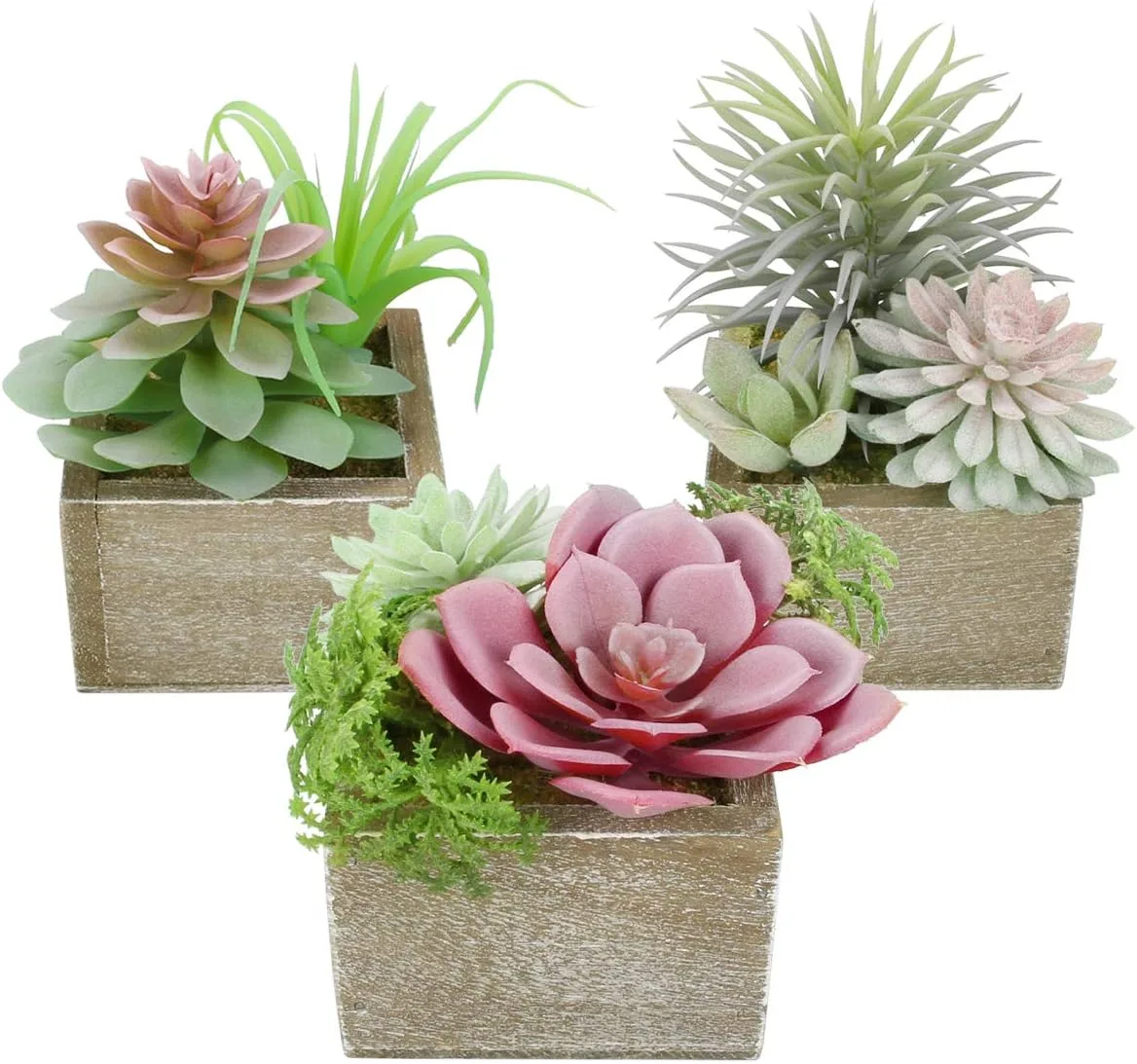
6. Pink-Toned Faux Succulent Set
Add feminine flair to your setup with these three pink-toned faux succulents. They work well beside soft green plants or as a color highlight on a shelf.
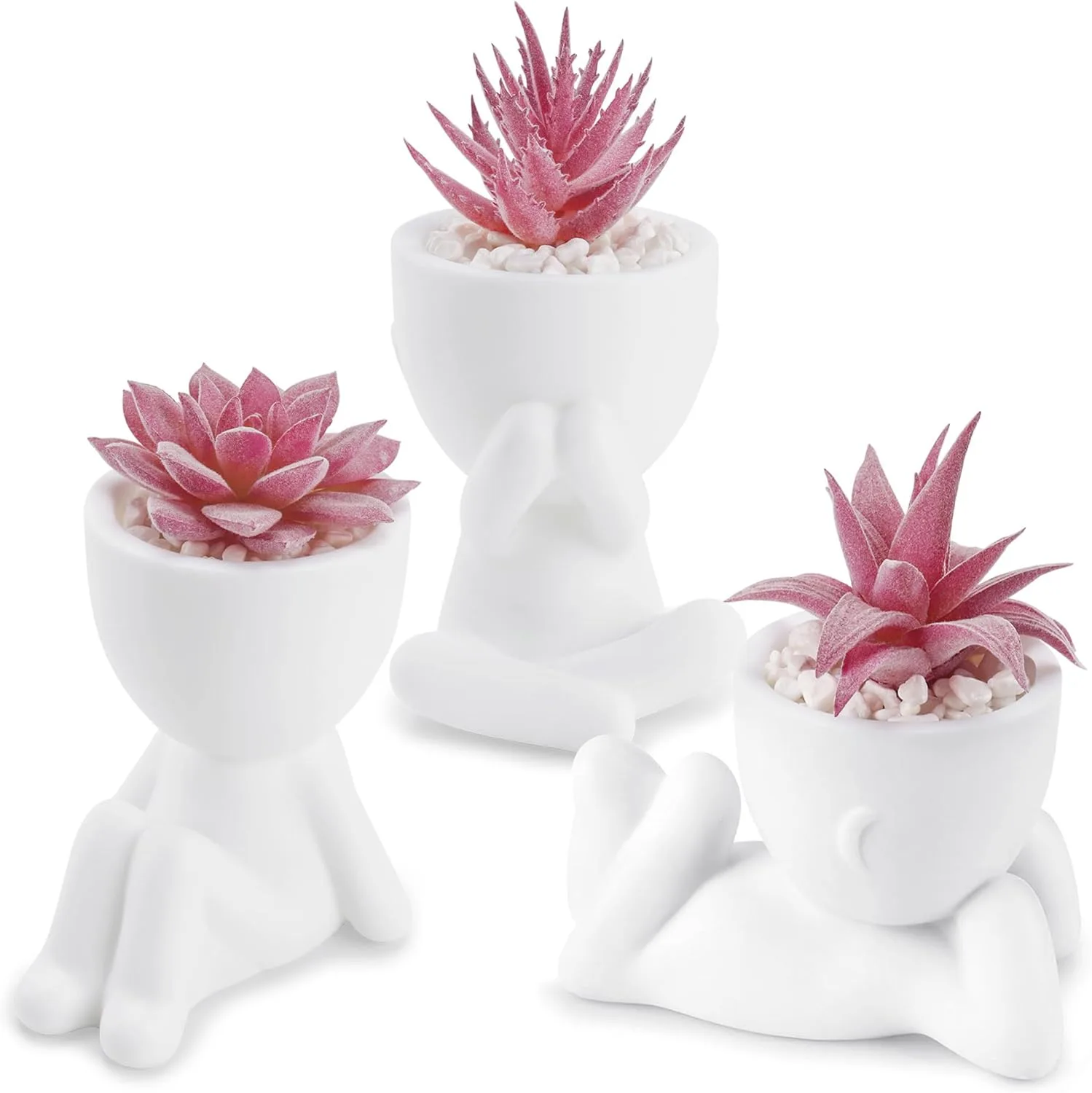
7. Artificial Dracaena Tree in Tall Pot
This 5-foot faux Dracaena adds drama and height to any corner. Ideal for pairing with real lower plants for tiered visual interest in larger rooms.
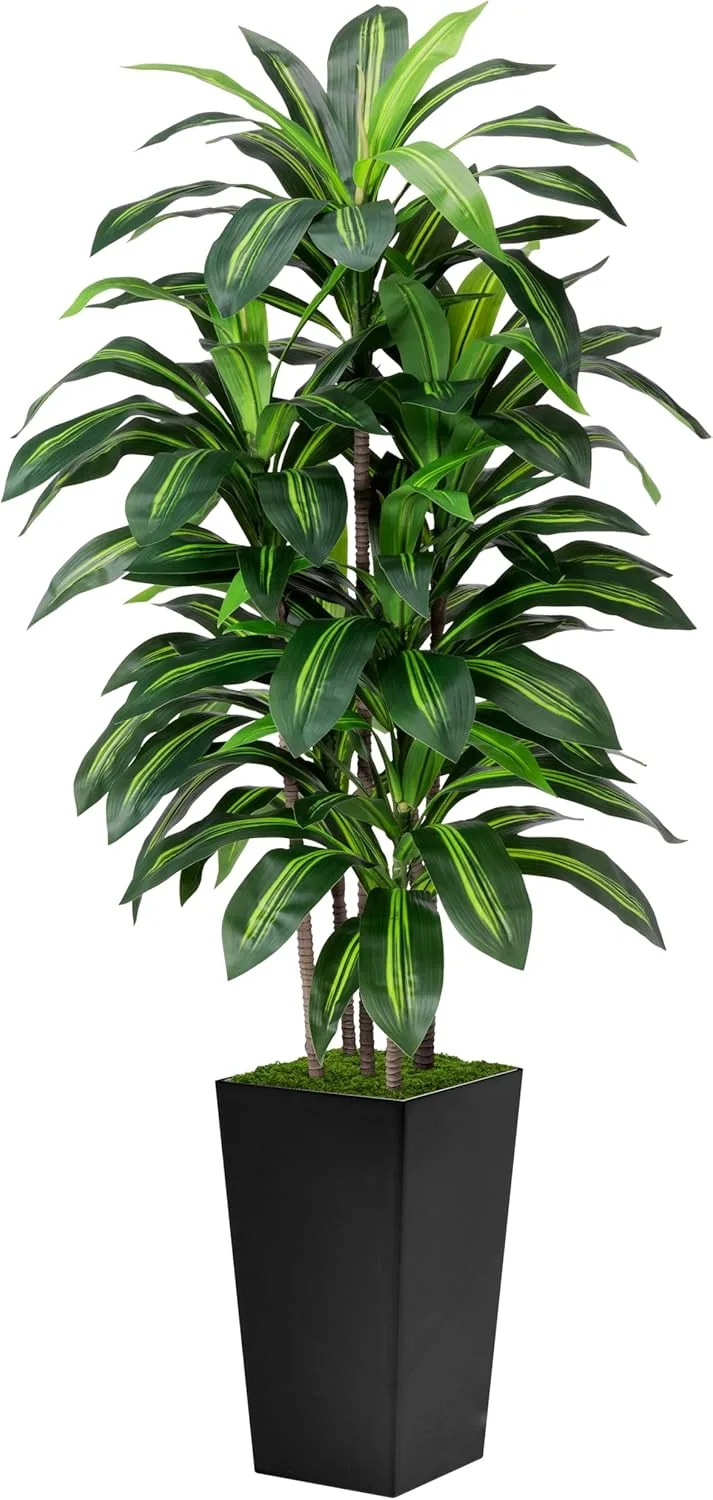
8. 6-Foot Faux Olive Tree with Natural Trunk
This tall artificial olive tree looks impressively lifelike and adds Mediterranean flair. It pairs beautifully with smaller potted herbs like rosemary or basil.
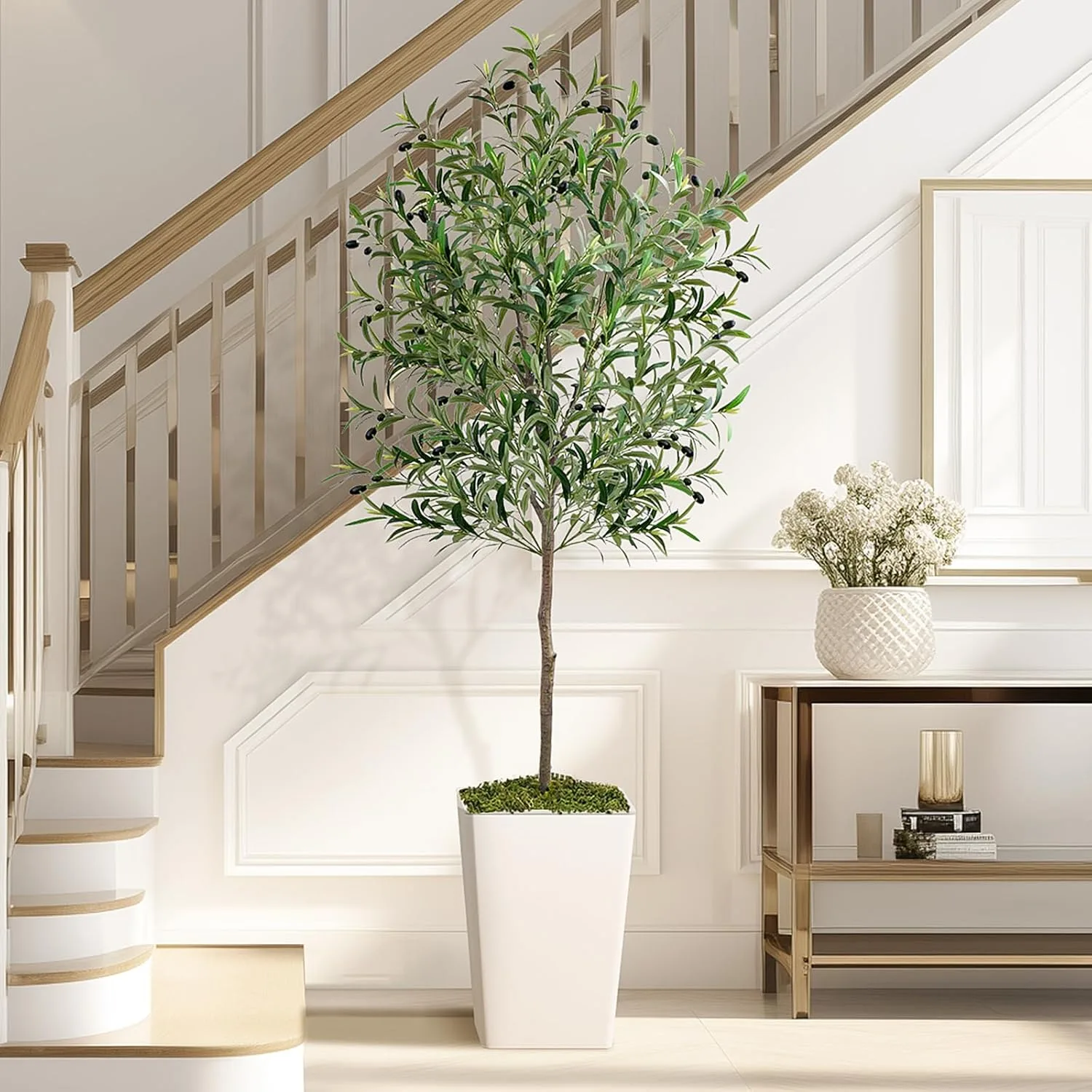
Common Mistakes to Avoid When Mixing Plants
Even if you know how to mix real and fake plants, some missteps can ruin the natural vibe you’re going for. Here’s what to avoid to keep your design foolproof.
Overusing Faux Plants in One Area
Clustering too many artificial plants together can make the setup feel static. Break them up with a few real pieces, or disperse them throughout the space to avoid creating a plastic-looking corner.
Ignoring Scale and Proportion
Size matters. Don’t place a tiny faux succulent next to a large rubber plant unless it’s part of a multi-level group. Keep scale consistent, especially when mixing real and faux varieties.
Unrealistic Placement
Don’t place a faux plant where a real one would never survive (like inside a shower stall or directly under an AC vent) unless you’re also using other decorative elements to support the illusion.
Seasonal Styling with Real and Faux Plants
Mixing real and artificial greenery makes it easier to decorate for the seasons without buying new plants every few months.
Spring & Summer
Use fresh herbs or flowering live plants (like basil or geraniums) alongside faux hanging ivy or blooming vines. It keeps the space lively while limiting care routines.
Fall & Winter
Try adding faux pampas grass, eucalyptus, or muted-tone florals with your slower-growing or dormant real plants. Bonus: faux options don’t drop leaves in colder months!
With a little planning, your faux plants can support your live greenery through every season—keeping your home vibrant year-round.
Who Should Mix Real and Fake Plants?
If you’re not sure whether combining greenery makes sense for your space, consider this: mixing real and fake plants is ideal for nearly every lifestyle.
- Busy Professionals: Skip the full-time plant care routine. Mix faux with a few live low-maintenance varieties.
- Pet Owners: Use faux alternatives for toxic real plants like lilies or philodendrons to protect your furry friends.
- Small Space Dwellers: Use vertical space with faux vines, while placing one or two real plants near sunlight access.
If you love greenery but hate the pressure, this hybrid method brings beauty without stress. Once you learn how to mix real and fake plants, it’s easy to make your space feel full, vibrant, and uniquely you.
How to Care for Mixed Greenery Setups
When learning how to mix real and fake plants, it’s easy to forget that both types need different kinds of upkeep. Here’s how to care for your combo like a pro.
Real Plants: Stick to a Routine
Each real plant in your arrangement will have its own needs, but sticking to a simple schedule—watering once or twice a week, rotating for light exposure, and pruning as needed—keeps them in top shape. Use a moisture meter if you’re unsure how often to water.
Faux Plants: Don’t Let Them Collect Dust
Faux plants might not need water, but they do need love. Dust them monthly using a microfiber cloth, compressed air, or a hair dryer set to cool. For silk leaves, a specialty plant cleaner spray can revive vibrancy and remove grime.
Combo Tip: Clean Together
Make it a habit to tend to both real and faux plants at the same time. While watering your real greenery, give your faux leaves a quick check or wipe-down. It keeps everything looking cohesive and ensures one side of your display doesn’t become dull or neglected.
With the right care, your mix of real and artificial plants will keep your space fresh and stylish with minimal effort.
Frequently Asked Questions
Is it okay to mix real and fake plants in home decor?
Yes, it’s totally acceptable—and even encouraged! Learning how to mix real and fake plants gives you flexibility and style without the high maintenance.
How do I make fake plants blend in with real ones?
Match the textures and tones, use cohesive planters, and group them together in layered arrangements. Place faux plants in harder-to-reach areas or places where real plants struggle.
Can I use faux plants outdoors with real ones?
Yes, but be sure your fake plants are labeled UV-resistant to prevent fading. Pair them with real hardy plants like succulents or ornamental grasses for a cohesive outdoor setup.
What are the best types of faux plants to mix with real ones?
Choose realistic options like eucalyptus, succulents, olive trees, or snake plants. These blend well visually and are harder to distinguish from their living counterparts.
Will guests notice I’m using fake plants?
Not if you’ve learned how to mix real and fake plants correctly! Most high-quality faux plants today are nearly indistinguishable from the real thing—especially when styled well.
Do fake plants need any maintenance?
Yes, but very little. A quick dusting once a month and occasional cleaning with plant-safe spray is enough to keep them looking lifelike and vibrant.
Why mix real and artificial plants instead of going all-in on one type?
Because it gives you the best of both worlds! By learning how to mix real and fake plants, you get the authenticity and oxygen of real greenery with the visual balance and low upkeep of faux foliage.
Conclusion
Now that you’ve learned how to mix real and fake plants, you can create a vibrant, low-maintenance, and stylish indoor jungle that feels effortless and looks professional. Here’s a quick recap of what matters most:
- Mix strategically: Use real plants where care is easy, and faux ones in low-light or out-of-reach areas.
- Match textures and tones: Choose faux plants that complement your real ones in color, sheen, and shape.
- Unify with containers: Use cohesive planters to blur the line between artificial and real greenery.
- Style seasonally: Keep your decor fresh by rotating accents throughout the year using a mix of plant types.
- Maintain both types: Water the real, dust the faux, and keep everything vibrant and intentional.
Combining greenery doesn’t have to be complicated. With the right products and styling techniques, mixing real and fake plants can completely transform your space—without adding stress. Ready to bring your home to life? Scroll back to our top product picks and start decorating today!
Want to find out more? Make sure to check out more of our blog articles here.





Leave a Reply
You must be logged in to post a comment.